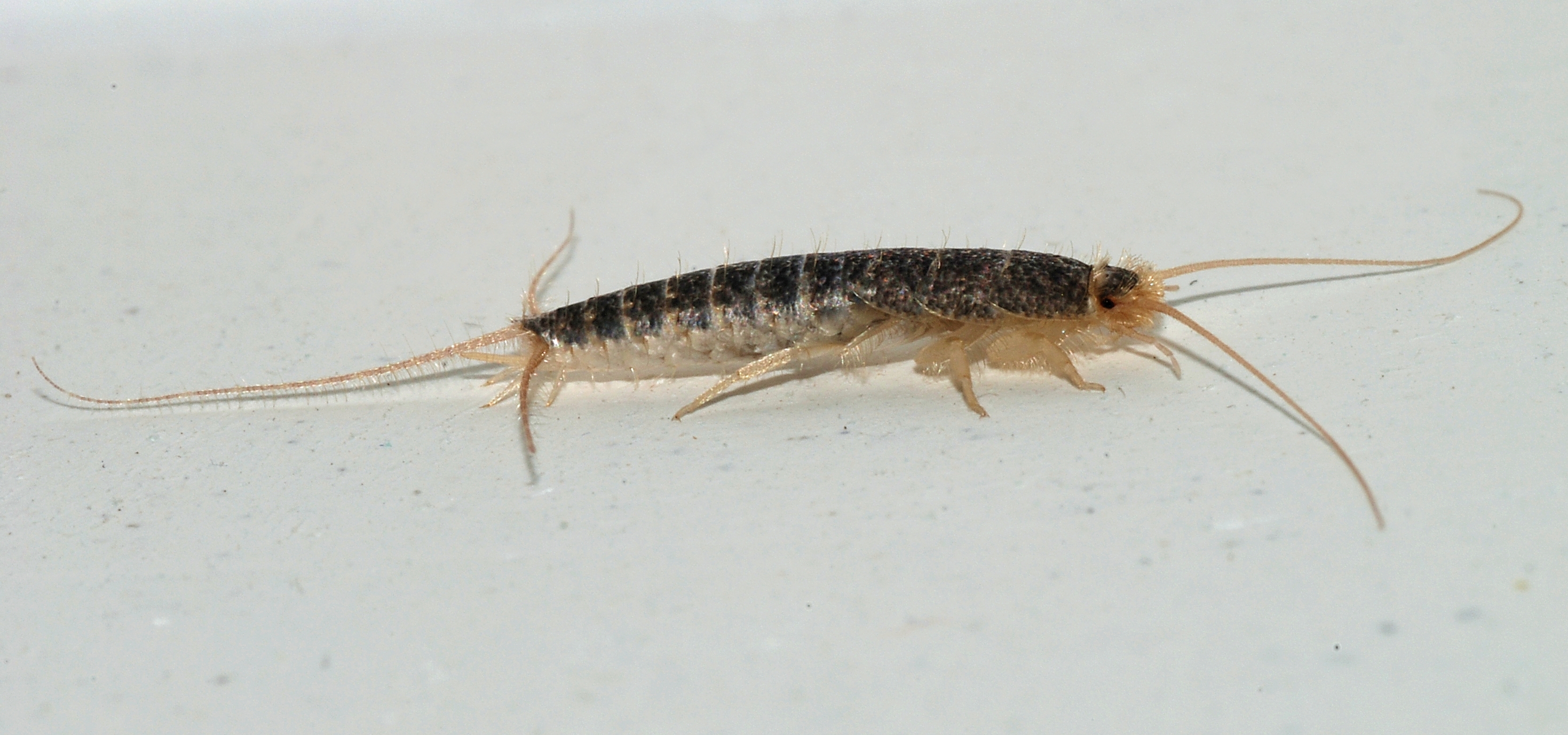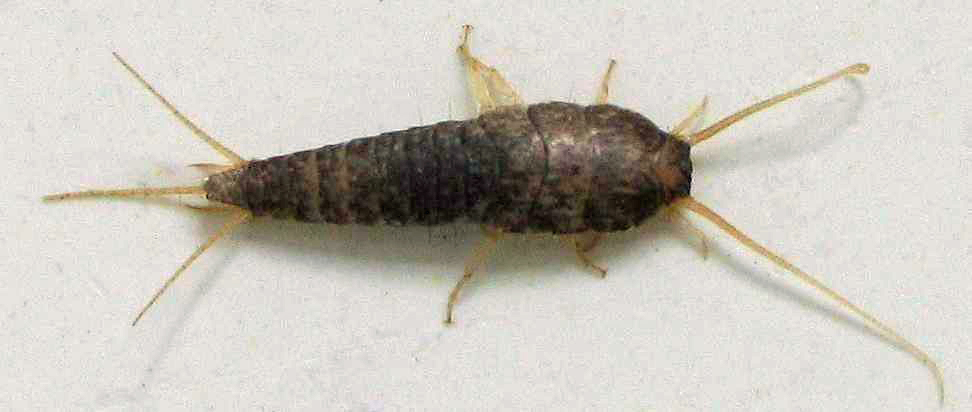|
Lepismatidae
Lepismatidae is a family of primitive wingless insects with about 190 described species. This family contains the two most familiar members of the order Zygentoma: the silverfish (''Lepisma saccharinum'') and the firebrat (''Thermobia domestica''). It is one of five families in the order Zygentoma. Lepismatids are elongated, flattened insects, the majority of which are scavengers. The abdomen is usually clothed in tiny scales and terminates with three "tails" of roughly equal length. The compound eyes are small and well separated. They typically live in warm, damp environments, including indoors. They avoid light. Parasites Member of Strepsiptera family Mengenillinidae exclusively parasitise members of Lepismatidae. Host-species relationships include: ''Eoxenos laboulbenei'' on '' Tricholepisma aureum'', '' Neoasterolepisma wasmanni'' and ''N. palmonii''; ''Mengenilla parvula'' on '' Sceletolepisma michaelseni''; ''Mengenilla nigritula'' on '' Ctenolepisma ciliatum'' and ''Cten ... [...More Info...] [...Related Items...] OR: [Wikipedia] [Google] [Baidu] |
Ctenolepisma Longicaudatum
''Ctenolepisma longicaudatum'', generally known as the gray silverfish, long-tailed silverfish or paper silverfish, is a species of Zygentoma in the family Lepismatidae. It was described by the German entomologist Karl Leopold Escherich in 1905 based on specimens collected in South Africa, but is found worldwide as synanthrope in human housings. In recent years, gray silverfish have increasingly become an issue in indoor environments in Europe, especially in newly built houses with a stable climate beneficial for the growth and reproduction of this species. As a food generalist with the ability to digest the cellulose contained in paper and cellulose-based textiles like rayon, ''Ctenolepisma longicaudatum'' is considered a pest species in cultural heritage institutions like libraries and archives. Nomenclature Most authors have historically treated the nomenclatural gender of ''Ctenolepisma'' as feminine, but in 2018 the International Commission on Zoological Nomenclature i ... [...More Info...] [...Related Items...] OR: [Wikipedia] [Google] [Baidu] |
Zygentoma
Zygentoma are an order in the class Insecta, and consist of about 550 known species. The Zygentoma include the so-called silverfish or fishmoths, and the firebrats. A conspicuous feature of the order are the three long caudal filaments. The two lateral filaments are cerci, and the medial one is an epiproct or ''appendix dorsalis''. In this they resemble the Archaeognatha, although the cerci of Zygentoma, unlike in the latter order, are nearly as long as the epiproct. Until the late twentieth century the Zygentoma were regarded as a suborder of the Thysanura, until it was recognized that the order Thysanura was paraphyletic, thus raising the two suborders to the status of independent monophyletic orders, with Archaeognatha as sister group to the Dicondylia, including the Zygentoma. Etymology The name "Zygentoma" is derived from the Greek ('), in context meaning "yoke" or "bridge"; and ('), "insects", literally "cut into" because of the segmented anatomy of typical insec ... [...More Info...] [...Related Items...] OR: [Wikipedia] [Google] [Baidu] |
Ctenolepisma
''Ctenolepisma'' is a genus of primitive insects in the order Zygentoma, closely related to the silverfish and firebrat but less reliant on human habitation, some species being found both indoors and outdoors and some found exclusively outdoors. The genus is distributed nearly worldwide in warm regions. Australia lacks native ''Ctenolepisma'', but is home to introduced species. Nomenclature Most authors have historically treated the nomenclatural gender of ''Ctenolepisma'' as feminine, but in 2018 the International Commission on Zoological Nomenclature issued a formal ruling (ICZN Opinion 2427) stating the gender of ''Lepisma'' (and all genera with that ending) is neuter, following ICZN Article 30, which resulted in changes to the spelling of several well-known species, including ''Ctenolepisma longicaudatum'' (formerly ''longicaudata''). Diversity There are roughly 75 extant species presently recognized as valid in the genus, and one fossil *''Ctenolepisma abyssinicum'' Men ... [...More Info...] [...Related Items...] OR: [Wikipedia] [Google] [Baidu] |
Ctenolepisma Nigrum
''Ctenolepisma'' is a genus of primitive insects in the order Zygentoma, closely related to the silverfish and firebrat but less reliant on human habitation, some species being found both indoors and outdoors and some found exclusively outdoors. The genus is distributed nearly worldwide in warm regions. Australia lacks native ''Ctenolepisma'', but is home to introduced species. Nomenclature Most authors have historically treated the nomenclatural gender of ''Ctenolepisma'' as feminine, but in 2018 the International Commission on Zoological Nomenclature issued a formal ruling (ICZN Opinion 2427) stating the gender of ''Lepisma'' (and all genera with that ending) is neuter, following ICZN Article 30, which resulted in changes to the spelling of several well-known species, including ''Ctenolepisma longicaudatum'' (formerly ''longicaudata''). Diversity There are roughly 75 extant species presently recognized as valid in the genus, and one fossil *''Ctenolepisma abyssinicum'' Men ... [...More Info...] [...Related Items...] OR: [Wikipedia] [Google] [Baidu] |
Ctenolepisma Calvum
''Ctenolepisma'' is a genus of primitive insects in the order Zygentoma, closely related to the silverfish and firebrat but less reliant on human habitation, some species being found both indoors and outdoors and some found exclusively outdoors. The genus is distributed nearly worldwide in warm regions. Australia lacks native ''Ctenolepisma'', but is home to introduced species. Nomenclature Most authors have historically treated the nomenclatural gender of ''Ctenolepisma'' as feminine, but in 2018 the International Commission on Zoological Nomenclature issued a formal ruling (ICZN Opinion 2427) stating the gender of ''Lepisma'' (and all genera with that ending) is neuter, following ICZN Article 30, which resulted in changes to the spelling of several well-known species, including ''Ctenolepisma longicaudatum'' (formerly ''longicaudata''). Diversity There are roughly 75 extant species presently recognized as valid in the genus, and one fossil *''Ctenolepisma abyssinicum'' Men ... [...More Info...] [...Related Items...] OR: [Wikipedia] [Google] [Baidu] |
Ctenolepisma Lineatum
''Ctenolepisma lineatum'' is a species of insect of the order Zygentoma. It is generally similar to the closely related silverfish but can be distinguished by being rather stouter and less shiny with all appendages ( antennae and 3 "tails") noticeably longer. The abdomen is often marked with dark brown lines and the species is sometimes called four-lined silverfish. This species is native to southern Europe but is now found throughout most of the world as an accidental introduction although it is absent from polar and cooler temperate regions (e.g. the British Isles). It is found both indoors and outdoors and can be a nuisance pest. Recent studies on this species in Europe suggest that there is enough geographical variation to justify splitting into several species, with one form already having been given specific status as '' Ctenolepisma almeriense'' from south-eastern Spain , image_flag = Bandera de España.svg , image_coat = Escudo de España (m ... [...More Info...] [...Related Items...] OR: [Wikipedia] [Google] [Baidu] |
Thermobia Domestica
The firebrat (''Thermobia domestica'') is a small hexapod (typically 1–1.5 cm), in the order Zygentoma. Habitat Firebrats prefer higher temperatures and require some humidity, and can be found in bakeries and near boilers or furnaces. They feed on a wide variety of carbohydrates and starches that are also protein sources such as dog food, flour and book bindings. They are distributed throughout most parts of the world and are normally found outdoors under rocks, leaf litter, and in similar environments, but are also often found indoors where they are considered pests. They do not cause major damage, but they can contaminate food, damage paper goods, and stain clothing. Otherwise they are mostly harmless. Breeding At 1.5 to 4.5 months of age the female firebrat begins laying eggs if the temperature is right (32–41 °C or 90–106 °F). It may lay up to 6000 eggs in a lifetime of about 3–5 years. After incubation (12–13 days), the nymphs ... [...More Info...] [...Related Items...] OR: [Wikipedia] [Google] [Baidu] |
Acrotelsa
''Acrotelsa'' is a genus of silverfish in the family Lepismatidae Lepismatidae is a family of primitive wingless insects with about 190 described species. This family contains the two most familiar members of the order Zygentoma: the silverfish (''Lepisma saccharinum'') and the firebrat (''Thermobia domestica'' .... There are at least two described species in ''Acrotelsa''. Species These two species belong to the genus ''Acrotelsa'': * '' Acrotelsa collaris'' (Fabricius, 1793) * '' Acrotelsa galapagoensis'' Guthrie References Further reading * * Lepismatidae Articles created by Qbugbot {{Zygentoma-stub ... [...More Info...] [...Related Items...] OR: [Wikipedia] [Google] [Baidu] |
Lepisma Saccharinum
The silverfish (''Lepisma saccharinum'') is a species of small, primitive, wingless insect in the order Zygentoma (formerly Thysanura). Its common name derives from the insect's silvery light grey colour, combined with the fish-like appearance of its movements. The scientific name (''L. saccharinum'') indicates that the silverfish's diet consists of carbohydrates such as sugar or starches. While the common name ''silverfish'' is used throughout the global literature to refer to various species of Zygentoma, the Entomological Society of America restricts use of the term solely for ''Lepisma saccharinum''. Description The silverfish is a nocturnal insect typically long. Its abdomen tapers at the end, giving it a fish-like appearance. The newly hatched are whitish, but develop a greyish hue and metallic shine as they get older. It has two long cerci and one terminal filament at the tip of the abdomen between the cerci. It also has two small compound eyes, although other ... [...More Info...] [...Related Items...] OR: [Wikipedia] [Google] [Baidu] |
Acrotelsa Collaris
''Acrotelsa'' is a genus of silverfish in the family Lepismatidae Lepismatidae is a family of primitive wingless insects with about 190 described species. This family contains the two most familiar members of the order Zygentoma: the silverfish (''Lepisma saccharinum'') and the firebrat (''Thermobia domestica'' .... There are at least two described species in ''Acrotelsa''. Species These two species belong to the genus ''Acrotelsa'': * '' Acrotelsa collaris'' (Fabricius, 1793) * '' Acrotelsa galapagoensis'' Guthrie References Further reading * * Lepismatidae Articles created by Qbugbot {{Zygentoma-stub ... [...More Info...] [...Related Items...] OR: [Wikipedia] [Google] [Baidu] |
Ctenolepisma Ciliatum
''Ctenolepisma ciliatum'' is a species of primitive insect of the order Zygentoma. Described from Spain, it is a common species in subarid habitats of the Mediterranean The Mediterranean Sea is a sea connected to the Atlantic Ocean, surrounded by the Mediterranean Basin and almost completely enclosed by land: on the north by Western Europe, Western and Southern Europe and Anatolia, on the south by North Africa ... bassin from Portugal to Western Asia. It is very close to ''C. longicaudatum''. Its dorsal pattern is usually uniformly brownish or greyish with iridescences, or with two or four longitudinal fringes along the abdomen. Anatomic/morphologic differences with related species involve microscopic characters as setation or shape and distribution of scales. References On ''Ctenolepisma ciliata'' and a new related species, ''Ctenolepisma armeniaca'' sp. n. (Zygentoma, Lepismatidae) Lepismatidae Insects of Europe Fauna of Spain Insects described in 1831 Taxa named by ... [...More Info...] [...Related Items...] OR: [Wikipedia] [Google] [Baidu] |
Sceletolepisma Michaelseni
''Sceletolepisma michaelseni'' is a species of silverfish in the family Lepismatidae Lepismatidae is a family of primitive wingless insects with about 190 described species. This family contains the two most familiar members of the order Zygentoma: the silverfish (''Lepisma saccharinum'') and the firebrat (''Thermobia domestica'' .... References Further reading * Lepismatidae Articles created by Qbugbot Insects described in 1905 {{Zygentoma-stub ... [...More Info...] [...Related Items...] OR: [Wikipedia] [Google] [Baidu] |
.jpg)

